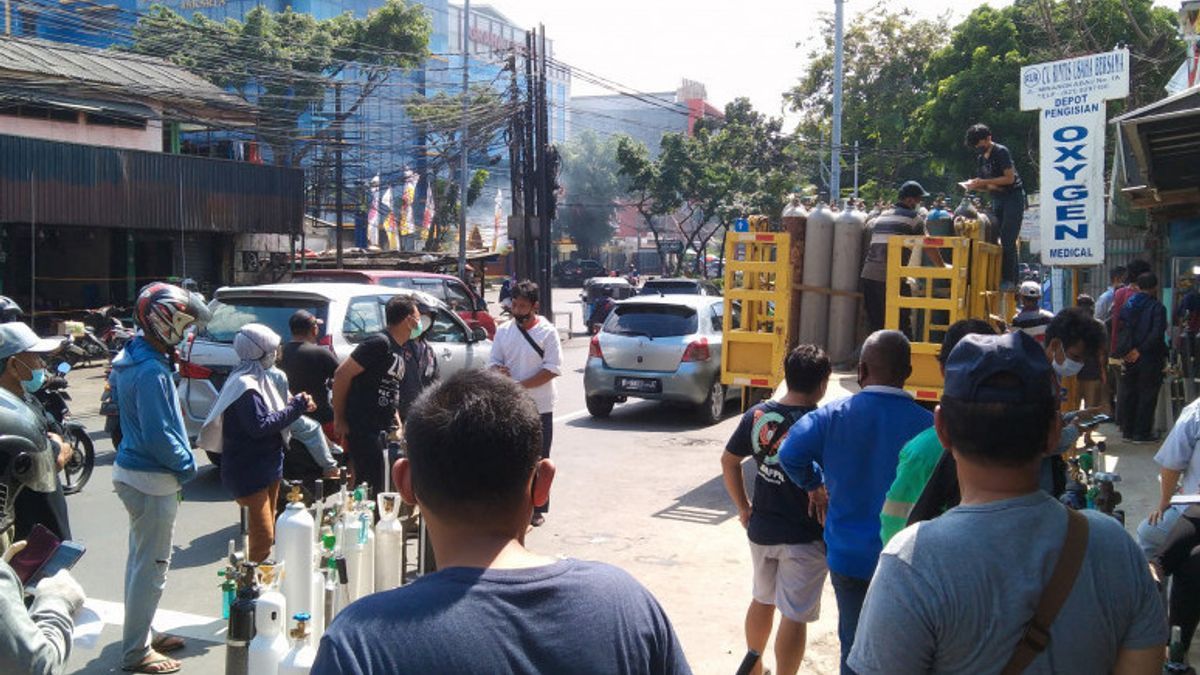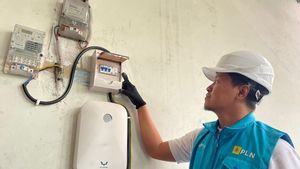JAKARTA - The surge in COVID-19 cases has made oxygen scarce. Various alternative ideas for oxygen supply have emerged. From the misguided, to the big opportunity to increase the supply of oxygen.
In recent days, information about someone who needs medical oxygen is often circulating on social media. The pandemic has depleted oxygen stocks.
So rare, in some places seen many people are willing to queue for hours to get oxygen supply. This makes the price of medical oxygen in Jakarta soar from Rp. 3,000 to Rp. 5,000 per tube.
Looking for ways
This scarcity makes people look for other ways to get oxygen. There are various ways, some are considered misguided, but there are also those who have a great opportunity to supply additional oxygen.
A few days ago a video tutorial on making oxygen using an aquarium aerator pump went viral. The video was originally uploaded to Rinaldi Munir's Facebook account.
In the video, the man who claims to be named Ruben refers to his innovation as an O2 supply tool for people who are short of breath. Innovation is not expensive, it only requires materials costing approximately Rp. 120 thousand.
"But it can save lives because during the (Covid-19) pandemic now many hospitals are full," he said in the 5 minute 13 second viral video.
Ruben explained that his device consisted of an aerator or water pump like those used to produce air bubbles in an aquarium. Others are two small bottles of mineral water, a small hose about two meters long.
He prepared an aerator tube and the end of the tube was inserted into the patient's nose. Ruben then closed the bottle tightly with the statement: so that oxygen can flow smoothly.
But the fact is, according to the Head of the Instrumentation Development Center at LIPI, Anto Tri Sugiarto, quoted by covid19.go.id, explaining that the device cannot increase the amount of oxygen inhaled. Because the aerator pump, only helps send air into the respiratory tract.
"What is pumped is air with an oxygen composition of about 20.9 percent," said Anto. According to him, this is different from giving much-needed oxygen to COVID-19 patients with severe symptoms.
As we know, the air we usually breathe at the tip of our nose is not 100% oxygenated. Generally, the oxygen content in normal air is around 20.93 percent.
The most abundant gas content in the air is nitrogen, about 78 percent. While for medical purposes, what is needed is pure oxygen. For this reason, various parties are competing to find alternative ways to make oxygen.

One of the ideas that emerged was the idea of modifying a nitrogen generator for tires that are commonly found on the roadside. One of the people who came up with the idea was the Founder of Drone Emprit, Ismail Fahmi.
Through his Twitter account, Fahmi asked how to modify the tool. "Chemical Engineer or Mechanical Engineer, any ideas?"
The answers to that post varied. There are those who think it is very possible, but not a few who think it is difficult.
Account @SuperGregAndre for example, people who claim to work in a nitrogen generator and oxygen generator claim that it can be done. "But something needs to be replaced... The equipment to be replaced is quite expensive, sir," he said.
While the account @lysorin argues, it may be possible, but its effectiveness is low. "This generator uses a molecular sieve to separate the air, the amount of N2 in the air is very large, 79 percent, so it's easy to take," he wrote.
Applied in IndiaChemical or Mechanical Engineer, any ideas? There are lots of Nitrogen filling outlets for tires. Actually it's hard not to change or increase the ability of this machine to fill oxygen? How do you do it? If there is an easy technique, it can be very helpful pic.twitter.com/1Tv6bwYmHT
— Ismail Fahmi (@ismailfahmi) July 4, 2021
This idea has actually been implemented in India. The executor is from the India-Bombay Institute of Technology (IIT-B). They set up a work unit to convert nitrogen generators across India into oxygen generators.
Quoted from Hindustan Times, nitrogen-producing plants are easy to find in various industries such as oil and gas, food and beverage.
Basically nitrogen plants work with Pressure Swing Adsorption (PSA) technology, where air from the atmosphere is sucked in, filtered from impurities so that nitrogen can be extracted. While the oxygen that is also contained in the sucked atmosphere is released back into the atmosphere.
With the invention, existing nitrogen-producing plants could be modified to produce oxygen. The oxygen levels produced have also been tested in the IIT-B lab and were found to be 93-96 percent pure and at a pressure of 3.5 atmospheres.
“In a nitrogen plant, the air pressure is controlled and then cleaned of impurities such as water vapor, oil, carbon dioxide and hydrocarbons. After this step, pure air enters the PSA chamber which is equipped with a carbon molecular sieve (CMS) or a filter that can separate nitrogen and oxygen. We propose that the filter be replaced with a filter that can separate oxygen,” said Milind Atrey, a researcher in the mechanical engineering department of IIT-B India.
Atrey together with Tata Consulting Engineers Limited (TCE) changed the CMS with a zeolite molecular sieve (ZMS) which can separate oxygen from the air. The Indian government identified and explored the feasibility of this conversion in early May as they were facing an oxygen supply crisis in the fight against Covid-19.
*Read other information about COVID-19 or other interesting articles from Ramdan Febrian Arifin.
Other BERNASThe English, Chinese, Japanese, Arabic, and French versions are automatically generated by the AI. So there may still be inaccuracies in translating, please always see Indonesian as our main language. (system supported by DigitalSiber.id)









